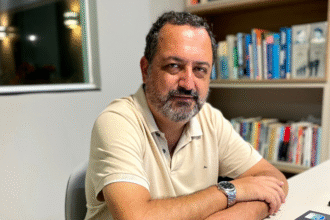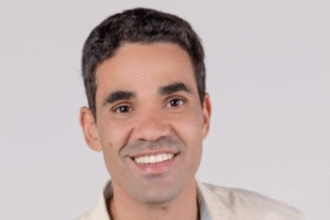After surviving a seriously abusive relationship, Gab Saab, a nutritionist, turned her painful experience into an opportunity to help others break cycles of suffering. Today, she is a specialist in Neuropsychoanalysis and Legal Psychology, and has just released the book “Abuse”, which serves as a guide to identify and face various types of relationships marked by violence, be it physical, psychological or financial.
This book addresses different areas of everyday life, such as the workplace, friendships, school, family and romantic relationships, providing essential information for victims and encouraging them to put an end to it. The work is structured into 40 short and direct chapters. Each chapter explores types of abuse, their consequences, and coping steps, and also offers legal insights, such as in divorce situations.
Through examples based on personal experiences, Gab Saab demonstrates how gestures that appear friendly, such as a joke or praise followed by criticism, can, in fact, hide abusive attitudes. Furthermore, she highlights that psychological violence can be so aggressive as to trigger physical symptoms of illness. The author herself developed a psychosomatic illness and lost more than half of her hair due to the psychological violence she suffered.
The book uses simple and accessible language, complemented by illustrations that explain concepts and behavioral patterns of manipulators. A visual “violentometer” is used to warn about the three phases of violence. Gab Saab also provides 25 tips to help with the process of leaving an abusive relationship, as well as guidance on the main reporting channels and personal financial planning steps for situations involving loss of assets or resources.
Gabriela, you mentioned that your book “Abuso” covers different types of abuse in different areas of everyday life. Can you give us some examples of how abuse can manifest itself in non-romantic situations, such as at work or among friends?
Clear. Abuse is common in all environments and usually goes unnoticed due to the initial subtlety that tends to worsen as the victim becomes permissive. In general, there is a pattern of abusive behavior, once a person has developed this personality, they can be abusive in all environments. In the emotional relationship, it tends to become more apparent due to the closer interaction combined with emotional factors that tend to be transferred to the partners.
In the family:
– Emotional blackmail through illness: “I’m so sick that I don’t know what will become of me”, making the victim feel guilty and comply with their whims;
– Role reversal, couples make their children participate in marital problems;
– Inversion of blame: they cause turmoil among family members and blame the victims for their own actions, trying to invert the blame to manipulate a situation. They never feel guilty and when they say they are guilty, it is only to attract the victim with a vote of confidence, but this feeling does not truly exist.
In the friends cycle:
– They do not wish the victim’s prosperity;
– Control;
– Derogatory phrases, followed by praise to confuse the victim’s head, such as “you are very intelligent, but I would never want to be like that”.
At work:
– Overwork until exhaustion;
-It does not allow for lunch breaks or even vacations;
– Derogatory comments intended to lower the victim’s self-esteem, making them feel that if they leave work, they will not be able to get something better;
– The victim becomes dependent on work and does everything to fit in to be accepted, which increasingly takes them to rock bottom.
You share personal experiences in the book to illustrate how gestures that appear friendly can actually hide abusive attitudes. How has your own experience contributed to your understanding of these behaviors?
From my own experience, just like abusive people, victims also have a behavioral pattern, this pattern is permissive, empathetic and always puts the other’s needs above their own. She tries to please at all costs to be accepted and commonly loses her identity due to being controlled.
Some points from my experience are crucial to identifying an abusive relationship. In these cases, every detail matters. The victim’s behavior is always to remain silent and normalize behaviors that are not normal. This excess of empathy makes the victim permissive to the point of accepting anything. She hides the abuse she suffers from society for fear of being judged and that is a victim’s first mistake. It is necessary to speak.
When the victim realizes, her life is completely controlled by the aggressor and when she realizes it, she is completely trapped by him. I only identified my story because I developed a psychosomatic disease of alopecia (hair loss) which, despite treatment and tests, did not show any acceptable explanation. After many years of being a victim and losing most of my hair, when I finally managed to break the cycle of abuse, it only took two days for my hair to stop falling out, which was just a physical confirmation of what my emotional symptoms were saying.
One of the topics covered in his book is psychological violence, which can have serious physical consequences. Could you share some examples of how psychological abuse has affected your health and what you have learned about this relationship between mind and body?
The psychological damage is devastating. I developed hair loss, anxiety, sleep disorders and a very striking characteristic, for me, having contact with the aggressor is the same as having contact with a kidnapper, it is very serious. Research indicates that victims of domestic violence suffer as much as someone who has gone through war. I am just one of thousands of victims who suffer in silence and die silently.
One visual resource you mention is the “violentometer” to warn about the three phases of violence. Can you briefly explain what this involves and how it can be helpful for victims to identify the signs of abuse?
The violentometer is a marker of the level of abuse and serves as a warning to identify abuses that tend to increase.
In addition to identifying abuse, her book offers tips to help people leave abusive relationships. Could you share one of these tips and explain how it can be effective in the liberation process?
The main tip is to be able to identify your own story. It is common for victims to see abuse in their neighbors, but they normalize their stories because they unconsciously fear coming into contact with the emotional wound. Many victims even understand the abusive relationship, but fear they will not have legal support because they do not know their rights, so they choose to maintain the relationship.

You mentioned in the release that you now work as a human development coach focusing on abusive relationships. How do you help people overcome these toxic experiences and rebuild their lives?
All my study was for self-knowledge. It took me a lot to be able to free myself from an extremely perverse relationship. When I managed to overcome this challenge, I understood that I could help other people too, that’s when I decided to write the book. From then on, many other jobs emerged, including social ones. I participate in a group of women going through divorce, lectures, courses and podcasts. I also develop children’s works that will be published soon with the purpose of increasing self-esteem in the emotional construction phase, as I believe in education as prevention for a healthier society.
For those reading your book or thinking about seeking help, what are the main reporting channels you recommend for cases of abuse?
The first is a police station and, if necessary, a protective measure. Afterwards, it is important to seek help from a defender. If the victim does not have financial means, they can seek a public defender, which I recommend in my book. Psychological assistance, support network and financial structure are other fundamental points to overcome this delicate process.
In addition to reporting, you also mentioned personal financial planning steps in cases of loss of assets or resources. Can you share some tips on how victims can deal with these issues?
The financial issue is one of the most important, as it is through asset control that the abuser controls the victim during and after the relationship, as there is misappropriation of assets and blocking of assets during years of legal dispute, which affects the victim’s life. .
One of the goals of an abusive person is to imprison the victim, so they use the money to keep the victim incarcerated for many years, sometimes for life. My main tip is: never let someone have absolute control of your assets.
Another important tip is to have an emergency fund and have a profession. Abusive people tend to make the victim abandon their structures, as this way they can have total control.
His personal experience led him to delve deeper into studies of Neuropsychoanalysis and Legal Psychology. How are these fields related to understanding and overcoming abuse?
Through neuropsychoanalysis we are able to delve deeper into our own history, understand the dynamics we experience and thus manage to shape it. It is fundamental! Legal psychology focuses on procedural aspects, how much it impacts children and indirect victims of abusive relationships and how much social impact all of this generates. It is humanly devastating.
Lastly, how do you hope your book and personal journey can help others who are struggling with abusive relationships and want to break free?
I want people to identify their stories and be able to take a stand. Some people choose to stay in the relationship, but once they understand the pattern of behavior, they can protect themselves and limit abusive behavior. In more serious cases, like mine, it is necessary to completely break away and rebuild yourself. My biggest wish is for people to have more humanized relationships.
Follow Gab Saab in Instagram





